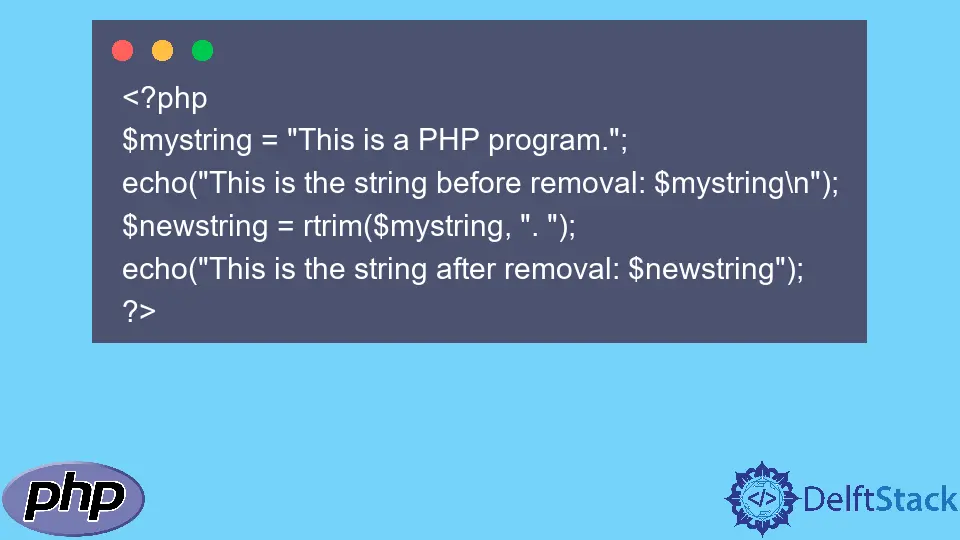如何在 PHP 中刪除字串中的最後一個字元
Minahil Noor
2023年1月30日

本文將介紹在 PHP 中使用函式 rtrim() 和 substr() 從字串中刪除最後一個字元的不同方法。
使用 rtrim() 函式來刪除最後一個字元
rtrim() 函式明確用於刪除字串末尾的空格或字元。使用該函式的正確語法如下。
rtrim($string, $character);
內建函式 rtrim() 有兩個引數,每個引數的細節如下。
| 引數 | 說明 | |
|---|---|---|
$string |
強制 | 這是我們要刪除最後一個字元的字串 |
$character |
可選 | 就是我們要從最後刪除的字元 |
這個函式返回執行刪除後得到的最終字串。下面的程式顯示了我們如何使用 rtrim() 函式從一個字串中刪除最後一個字元。
<?php
$mystring = "This is a PHP program.";
echo("This is the string before removal: $mystring\n");
$newstring = rtrim($mystring, ". ");
echo("This is the string after removal: $newstring");
?>
輸出:
This is the string before removal: This is a PHP program.
This is the string after removal: This is a PHP program
使用 substr() 函式來刪除最後一個字元
在 PHP 中,我們還可以使用 substr() 函式來刪除字串中的最後一個字元。這個命令返回一個指定的子字串,正確的執行語法如下。
substr($string, $start, $length)
函式 substr() 接受三個引數。
| 引數 | 說明 | |
|---|---|---|
$string |
強制 | 這是我們要刪除最後一個字元的字串 |
$start |
強制 | 它是子字串的起始位置。你可以閱讀更多關於它的資訊這裡。 |
$length |
可選 | 如果給定值,那麼函式將返回從 $start 引數到指定長度的子字串。 |
使用 substr() 函式從字串中刪除最後一個字元的程式如下。
<?php
$mystring = "This is a PHP program.";
echo substr($mystring, 0, -1);
?>
輸出:
This is a PHP program